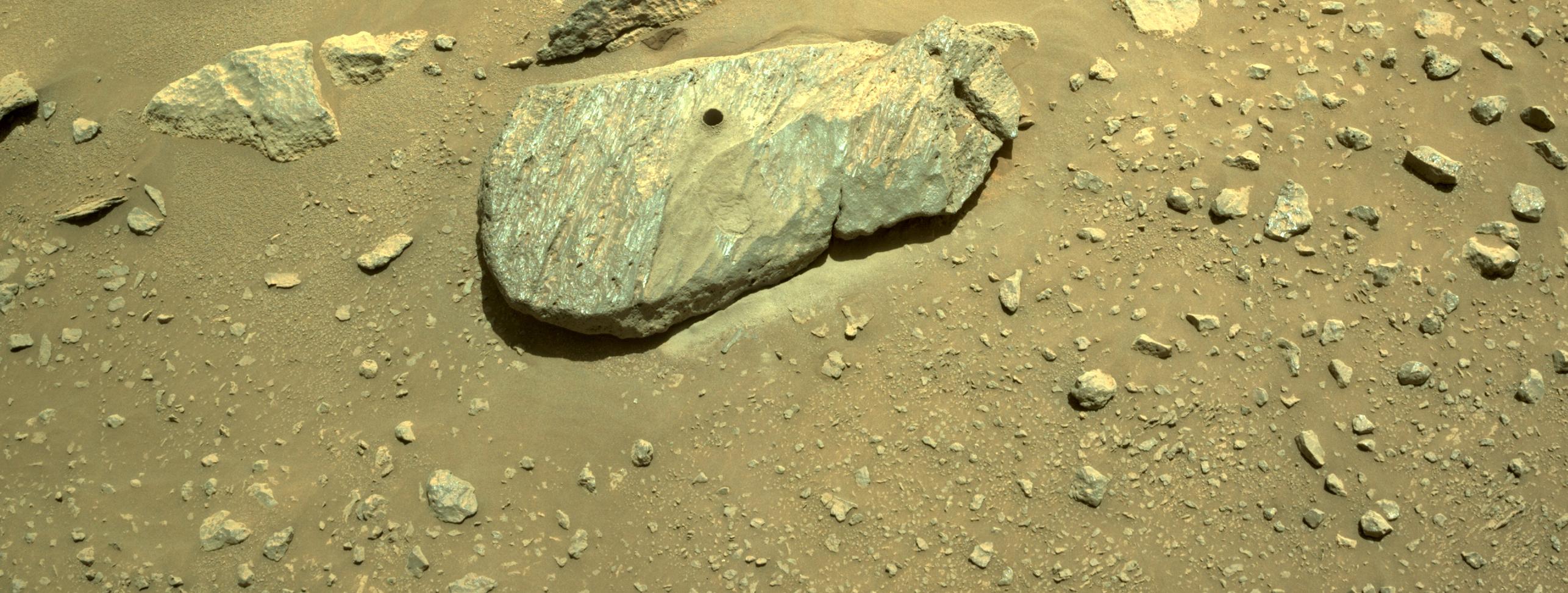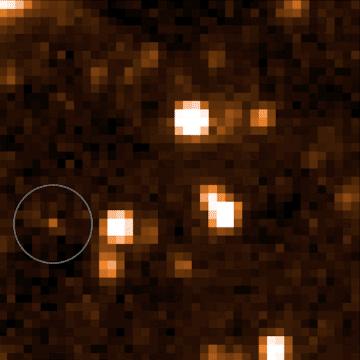-
Welcome to TechPowerUp Forums, Guest! Please check out our forum guidelines for info related to our community.
You are using an out of date browser. It may not display this or other websites correctly.
You should upgrade or use an alternative browser.
You should upgrade or use an alternative browser.
Solar System
- Thread starter Drone
- Start date
- Joined
- Jul 5, 2013
- Messages
- 30,711 (7.10/day)
- Joined
- Sep 1, 2010
- Messages
- 7,023 (1.31/day)
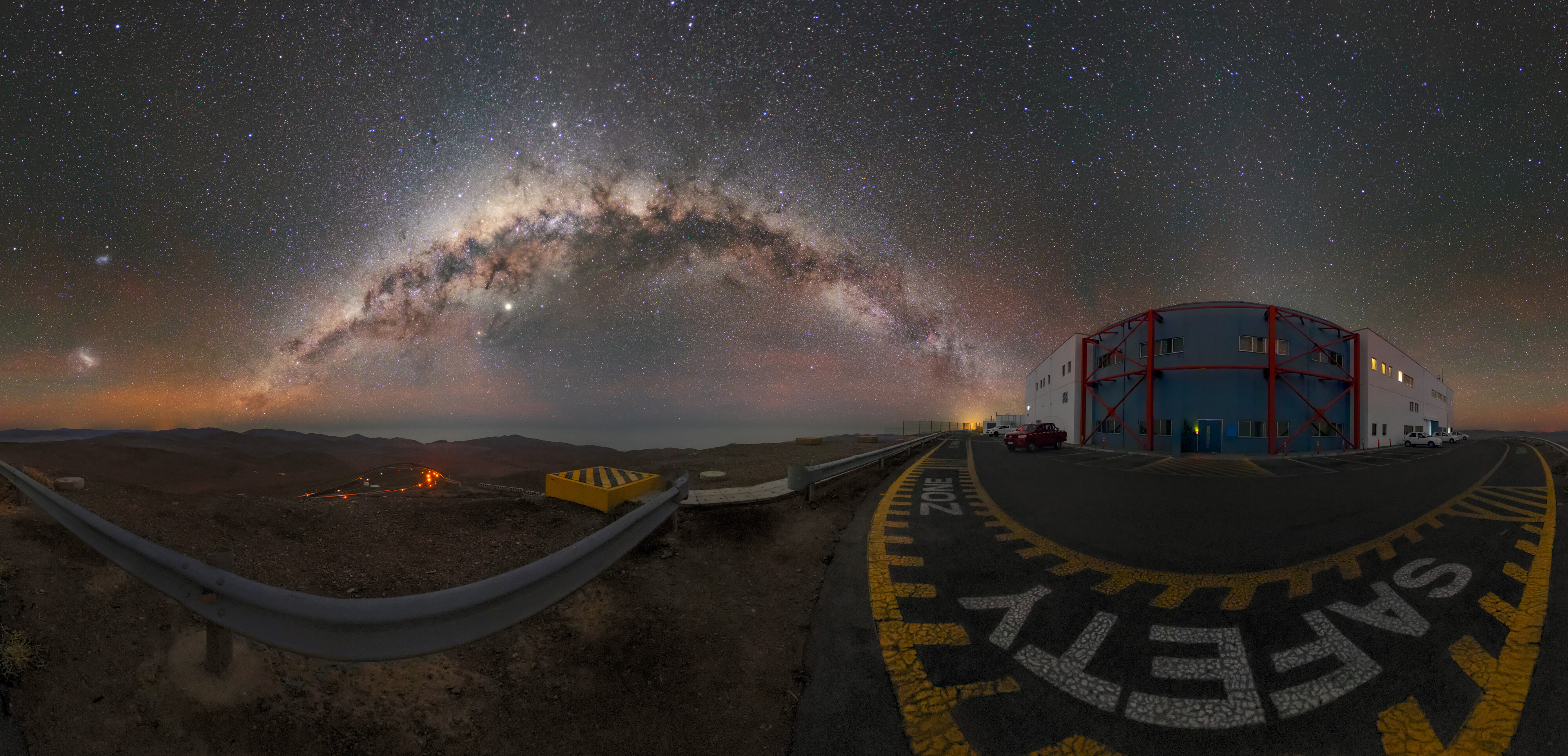
The stunning arch of the Milky Way stretches across the Chilean night sky, accompanied by the Magellanic Clouds on the left and admired from the control building of ESO’s Paranal Observatory, home to the Very Large Telescope (VLT).

This image, taken from aboard the ISS, shows the aurora australis as it streams across the Earth's atmosphere as the station orbited 271 miles above the southern Indian Ocean in between Asia and Antarctica.

This image from the NASA/ESA Hubble Space Telescope features AFGL 5180, a beautiful stellar nursery located in the constellation of Gemini. At the center of the image, a massive star is forming and blasting cavities through the clouds with a pair of powerful jets, extending to the top right and bottom left of the image. Light from this star is mostly escaping and reaching us by illuminating these cavities, like a lighthouse piercing through the storm clouds.
- Joined
- Sep 1, 2010
- Messages
- 7,023 (1.31/day)
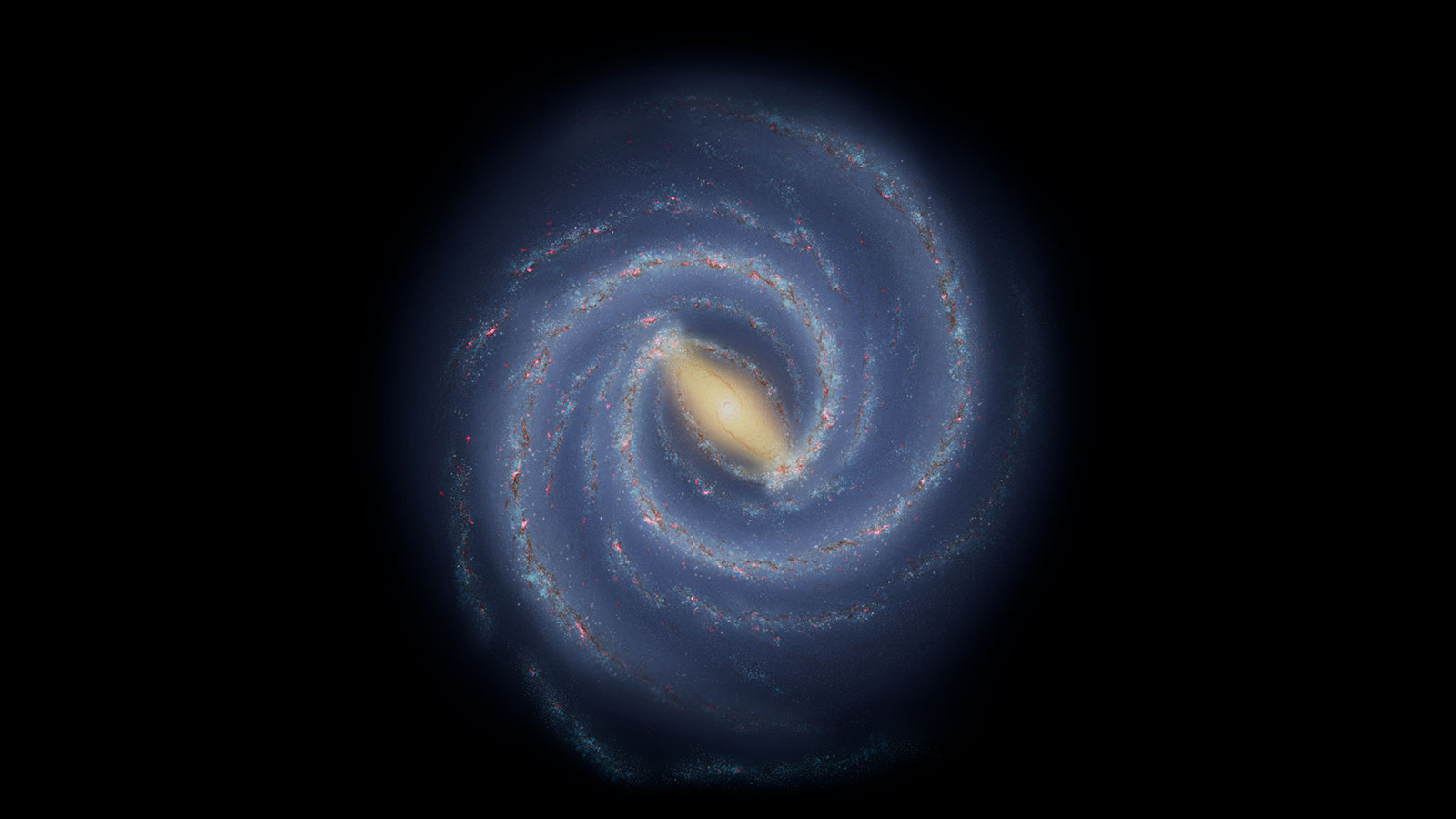
Astronomers Find a ‘Break’ in One of the Milky Way’s Spiral Arms - NASA
The newly discovered feature offers insight into the large-scale structure of our galaxy, which is difficult to study from Earth’s position inside it.
- Joined
- Sep 1, 2010
- Messages
- 7,023 (1.31/day)
- Joined
- Jan 28, 2020
- Messages
- 4,698 (2.44/day)
Comet Bernardinelli-Bernstein is coming. It's the largest ever detected - around 150 km wide and will be closest to the Sun in 2031.

One of the largest comets ever seen is headed our way (nationalgeographic.com)
One of the largest comets ever seen is headed our way (nationalgeographic.com)
- Joined
- Jul 5, 2013
- Messages
- 30,711 (7.10/day)
Space Lynx
Astronaut
- Joined
- Oct 17, 2014
- Messages
- 18,023 (4.67/day)
- Location
- Kepler-186f
| Processor | 7800X3D -25 all core |
|---|---|
| Motherboard | B650 Steel Legend (White/Silver) |
| Cooling | RZ620 (White/Silver) |
| Memory | 32gb ddr5 (2x16) cl 30 6000 (White/Silver) |
| Video Card(s) | Merc 310 7900 XT @3100 core -.75v (Black/Silver) |
| Display(s) | Agon 27" QD-OLED Glossy 240hz 1440p |
| Case | NZXT H710 (Black/Red) |
| Power Supply | Corsair RM850x |
I still don't understand how that New Horizons spacecraft can escape the gravity of the giant sun. It says it will run out of energy in 2038... its just sooo tiny and thrust is so small... I thought gravity/orbit pull in from the sun would be greater than that. I know its lesser the further you go, but still. I don't get it, lol
just finished video, it was good thanks for sharing
- Joined
- Jul 5, 2013
- Messages
- 30,711 (7.10/day)
The key is, it's so far out and moving so fast that it easily overpowers the pull of gravity at that range. Gravity is a tricky and sometimes very unintuitive force of physics.I still don't understand how that New Horizons spacecraft can escape the gravity of the giant sun. It says it will run out of energy in 2038... its just sooo tiny and thrust is so small... I thought gravity/orbit pull in from the sun would be greater than that. I know its lesser the further you go, but still. I don't get it, lol
- Joined
- Dec 14, 2009
- Messages
- 13,620 (2.42/day)
- Location
- Glasgow - home of formal profanity
| Processor | Ryzen 7800X3D |
|---|---|
| Motherboard | MSI MAG Mortar B650 (wifi) |
| Cooling | be quiet! Dark Rock Pro 4 |
| Memory | 32GB Kingston Fury |
| Video Card(s) | MSI RTX 5080 Vanguard SOC |
| Storage | Seagate FireCuda 530 M.2 1TB / Samsumg 960 Pro M.2 512Gb |
| Display(s) | LG 32" 165Hz 1440p GSYNC |
| Case | Asus Prime AP201 |
| Audio Device(s) | On Board |
| Power Supply | be quiet! Pure POwer M12 850w Gold (ATX3.0) |
| Software | W10 |
Gravity is a tricky and sometimes very unintuitive force of physics.
It's very peculiar indeed (link is mostly paywalled).
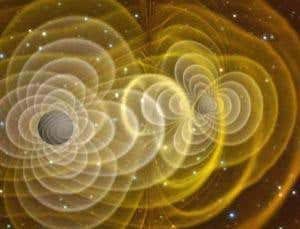
Gravity mysteries: Why is gravity so weak?
Gravity acts over vast distances, but why is it such a weak force? More: Seven things that don't make sense about gravity Take a moment to try a jump into the air. Have you ever thought about how remarkable it is that so little effort is required to jump a few inches off the ground. …
Gravity is a real weakling – 10 to the power 40 times weaker than the electromagnetic force that holds atoms together
- Joined
- Jul 5, 2013
- Messages
- 30,711 (7.10/day)
Exactly right. Gravity is very weak indeed.
Space Lynx
Astronaut
- Joined
- Oct 17, 2014
- Messages
- 18,023 (4.67/day)
- Location
- Kepler-186f
| Processor | 7800X3D -25 all core |
|---|---|
| Motherboard | B650 Steel Legend (White/Silver) |
| Cooling | RZ620 (White/Silver) |
| Memory | 32gb ddr5 (2x16) cl 30 6000 (White/Silver) |
| Video Card(s) | Merc 310 7900 XT @3100 core -.75v (Black/Silver) |
| Display(s) | Agon 27" QD-OLED Glossy 240hz 1440p |
| Case | NZXT H710 (Black/Red) |
| Power Supply | Corsair RM850x |
I suppose the reason gravity doesn't feel weak to me cause of my spinal cord issues I have, it sure kicks my ass quite often 
but yes if I zoom out, your logic makes sense in outer space. so amazing to think where Voyager is now, what the solar system looks like to Voyager right now... so beautiful, its existence - proof of our manifestation - even if the sun exploded tomorrow, that manifestation most likely will carry some of our story as a self-aware species to the end times...
does entropy exist in outer space? or will voyager simply live forever with no deterioration (assuming it stays far enough away from stars radiation and doesn't hit anything) @Drone

but yes if I zoom out, your logic makes sense in outer space. so amazing to think where Voyager is now, what the solar system looks like to Voyager right now... so beautiful, its existence - proof of our manifestation - even if the sun exploded tomorrow, that manifestation most likely will carry some of our story as a self-aware species to the end times...
does entropy exist in outer space? or will voyager simply live forever with no deterioration (assuming it stays far enough away from stars radiation and doesn't hit anything) @Drone
Space Lynx
Astronaut
- Joined
- Oct 17, 2014
- Messages
- 18,023 (4.67/day)
- Location
- Kepler-186f
| Processor | 7800X3D -25 all core |
|---|---|
| Motherboard | B650 Steel Legend (White/Silver) |
| Cooling | RZ620 (White/Silver) |
| Memory | 32gb ddr5 (2x16) cl 30 6000 (White/Silver) |
| Video Card(s) | Merc 310 7900 XT @3100 core -.75v (Black/Silver) |
| Display(s) | Agon 27" QD-OLED Glossy 240hz 1440p |
| Case | NZXT H710 (Black/Red) |
| Power Supply | Corsair RM850x |
any idea why this comet is green in our solar system? certain kinds of dust can produce different colors??? I am confused
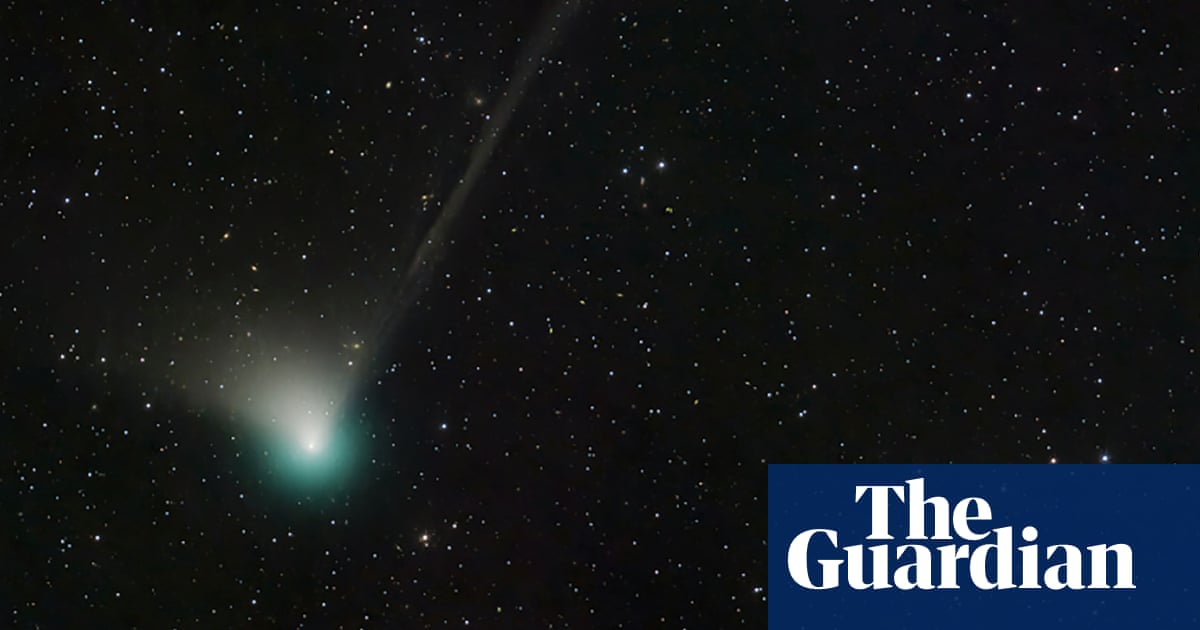
 www.theguardian.com
]
www.theguardian.com
]
Images already taken of comet C/2022 E3 reveal a subtle green glow that is thought to arise from the presence of diatomic carbon – pairs of carbon atoms that are bound together – in the head of the comet. The molecule emits green light when excited by the ultraviolet rays in solar radiation.\
I still don't understand how this can be, why don't we see a bunch of different colored comets then?

Exotic green comet not seen since stone age returns to skies above Earth
Comet C/2022 E3, which orbits the sun every 50,000 years, will be closest to us next Wednesday and Thursday
Images already taken of comet C/2022 E3 reveal a subtle green glow that is thought to arise from the presence of diatomic carbon – pairs of carbon atoms that are bound together – in the head of the comet. The molecule emits green light when excited by the ultraviolet rays in solar radiation.\
I still don't understand how this can be, why don't we see a bunch of different colored comets then?
Space Lynx
Astronaut
- Joined
- Oct 17, 2014
- Messages
- 18,023 (4.67/day)
- Location
- Kepler-186f
| Processor | 7800X3D -25 all core |
|---|---|
| Motherboard | B650 Steel Legend (White/Silver) |
| Cooling | RZ620 (White/Silver) |
| Memory | 32gb ddr5 (2x16) cl 30 6000 (White/Silver) |
| Video Card(s) | Merc 310 7900 XT @3100 core -.75v (Black/Silver) |
| Display(s) | Agon 27" QD-OLED Glossy 240hz 1440p |
| Case | NZXT H710 (Black/Red) |
| Power Supply | Corsair RM850x |
- Joined
- Dec 14, 2009
- Messages
- 13,620 (2.42/day)
- Location
- Glasgow - home of formal profanity
| Processor | Ryzen 7800X3D |
|---|---|
| Motherboard | MSI MAG Mortar B650 (wifi) |
| Cooling | be quiet! Dark Rock Pro 4 |
| Memory | 32GB Kingston Fury |
| Video Card(s) | MSI RTX 5080 Vanguard SOC |
| Storage | Seagate FireCuda 530 M.2 1TB / Samsumg 960 Pro M.2 512Gb |
| Display(s) | LG 32" 165Hz 1440p GSYNC |
| Case | Asus Prime AP201 |
| Audio Device(s) | On Board |
| Power Supply | be quiet! Pure POwer M12 850w Gold (ATX3.0) |
| Software | W10 |
If we ever detect tritium (radio frequency 1516.701 detects it) in our solar system (its never been checked) we could be almost sure there is alien probe that has been here. quite interesting watch here:
I initially marked this as Low Quality, mostly because the text must misrepresent the video. Tritium exists on earth and in our atmosphere. It is used in scientific and other fields; and as earth is part of the solar system, Tritium does exist and has been measured, at least on Earth.
Further, as much as SETI is cool, it's proven nothing in decades, apart from that space seems very empty of noise.
And to keep this thread where it's meant to be, we're not disussing the search for alien life here. This is about the wonders of the solar system, and what we know within, and where our research is going.
- Joined
- Jul 5, 2013
- Messages
- 30,711 (7.10/day)
To be fair, it greatly depends on the isotope of Tritium in question. While some isotopes of Tritium exist naturally in our home star system and even here on Earth, the referenced isotope does not and is completely synthetic, thus if we found it here, we would know that a technologically advanced civilization other than ourselves had been here a some point in the past and left it behind. This is not tin hat stuff and is an important aspect of the science we do in our star system.
We are actively, and in earnest, looking for legitimate signs of techno-signatures not created by ourselves here in the Solar System. It's a very real and serious aspect of astronomical science being conducted.
We are actively, and in earnest, looking for legitimate signs of techno-signatures not created by ourselves here in the Solar System. It's a very real and serious aspect of astronomical science being conducted.
Space Lynx
Astronaut
- Joined
- Oct 17, 2014
- Messages
- 18,023 (4.67/day)
- Location
- Kepler-186f
| Processor | 7800X3D -25 all core |
|---|---|
| Motherboard | B650 Steel Legend (White/Silver) |
| Cooling | RZ620 (White/Silver) |
| Memory | 32gb ddr5 (2x16) cl 30 6000 (White/Silver) |
| Video Card(s) | Merc 310 7900 XT @3100 core -.75v (Black/Silver) |
| Display(s) | Agon 27" QD-OLED Glossy 240hz 1440p |
| Case | NZXT H710 (Black/Red) |
| Power Supply | Corsair RM850x |
This might be a very elementary question about the planets in our solar system, and if it is well then so be it. However, I am very curious, with the latest JWST image of Neptune,

Why do some planets form like this with massive amounts of methane, and others have too much iron oxide (like Mars I think, but I may be wrong on that, but my overall point still stands)... like how, Earth is basically multiple collisions of materials from asteroids, comets, multiple large objects crashing into each other to form this perfect medley to allow for life. Where the fuck did Neptune get all its methane? Why is it just out there in middle of nowhere, why was not some of it taken by Pluto, is there something inherently built into physics, that when a mass of say methane becomes large enough, it attracts more of the same stuff mostly? Outside of gravity of course... I am speaking of like at the atomic level...
I don't know, I just don't get it.
In other news, this new image from JWST is breathaking. Honestly, how is this inherently built into physics to look so damn perfect? It's so beautiful. Man, sometimes I envy humans of the past, being in so touch with the stars, and so much of our culture now doesn't even care. Truly mind boggling in itself, but that is another story.
Why do some planets form like this with massive amounts of methane, and others have too much iron oxide (like Mars I think, but I may be wrong on that, but my overall point still stands)... like how, Earth is basically multiple collisions of materials from asteroids, comets, multiple large objects crashing into each other to form this perfect medley to allow for life. Where the fuck did Neptune get all its methane? Why is it just out there in middle of nowhere, why was not some of it taken by Pluto, is there something inherently built into physics, that when a mass of say methane becomes large enough, it attracts more of the same stuff mostly? Outside of gravity of course... I am speaking of like at the atomic level...
I don't know, I just don't get it.
In other news, this new image from JWST is breathaking. Honestly, how is this inherently built into physics to look so damn perfect? It's so beautiful. Man, sometimes I envy humans of the past, being in so touch with the stars, and so much of our culture now doesn't even care. Truly mind boggling in itself, but that is another story.
- Joined
- Feb 27, 2008
- Messages
- 9,200 (1.46/day)
| System Name | OrangeHaze / Silence |
|---|---|
| Processor | i7-13700KF / i5-10400 / |
| Motherboard | ROG STRIX Z690-E / MSI Z490 A-Pro Motherboard |
| Cooling | Corsair H75 / TT ToughAir 510 |
| Memory | 64Gb GSkill Trident Z5 / 32GB Team Dark Za 3600 |
| Video Card(s) | Palit GeForce RTX 2070 / Sapphire R9 290 Vapor-X 4Gb |
| Storage | Hynix Plat P41 2Tb\Samsung MZVL21 1Tb / Samsung 980 Pro 1Tb |
| Display(s) | 22" Dell Wide/24" Asus |
| Case | Lian Li PC-101 ATX custom mod / Antec Lanboy Air Black & Blue |
| Audio Device(s) | SB Audigy 7.1 |
| Power Supply | Corsair Enthusiast TX750 |
| Mouse | Logitech G502 Lightspeed Wireless / Logitech G502 Proteus Spectrum |
| Keyboard | K68 RGB — CHERRY® MX Red |
| Software | Win10 Pro \ RIP:Win 7 Ult 64 bit |
I thought this was a pic of Uranus?This might be a very elementary question about the planets in our solar system, and if it is well then so be it. However, I am very curious, with the latest JWST image of Neptune,
View attachment 290867
Why do some planets form like this with massive amounts of methane, and others have too much iron oxide (like Mars I think, but I may be wrong on that, but my overall point still stands)... like how, Earth is basically multiple collisions of materials from asteroids, comets, multiple large objects crashing into each other to form this perfect medley to allow for life. Where the fuck did Neptune get all its methane? Why is it just out there in middle of nowhere, why was not some of it taken by Pluto, is there something inherently built into physics, that when a mass of say methane becomes large enough, it attracts more of the same stuff mostly? Outside of gravity of course... I am speaking of like at the atomic level...
I don't know, I just don't get it.
In other news, this new image from JWST is breathaking. Honestly, how is this inherently built into physics to look so damn perfect? It's so beautiful. Man, sometimes I envy humans of the past, being in so touch with the stars, and so much of our culture now doesn't even care. Truly mind boggling in itself, but that is another story.
Space Lynx
Astronaut
- Joined
- Oct 17, 2014
- Messages
- 18,023 (4.67/day)
- Location
- Kepler-186f
| Processor | 7800X3D -25 all core |
|---|---|
| Motherboard | B650 Steel Legend (White/Silver) |
| Cooling | RZ620 (White/Silver) |
| Memory | 32gb ddr5 (2x16) cl 30 6000 (White/Silver) |
| Video Card(s) | Merc 310 7900 XT @3100 core -.75v (Black/Silver) |
| Display(s) | Agon 27" QD-OLED Glossy 240hz 1440p |
| Case | NZXT H710 (Black/Red) |
| Power Supply | Corsair RM850x |
I thought this was a pic of Uranus?
ah yes, you are correct, my bad. well my question still stands, just with different chemical makeups.
for example, why do we have so much water? netpune so much methane, wouldn't the asteroid/comet permeation/distrubution have been more varied/random than that? Let's say all the planets were eons ago all smashed together back and forth, is there something inherently built into physics, where methane clings to more methane, and so on and so forth? Is that how they were all shaped? I don't know, my head hurts. I just don't get it, why its distributed like this.
From NASA's website "Uranus gets its blue-green color from methane gas in the atmosphere. Sunlight passes through the atmosphere and is reflected back out by Uranus' cloud tops."
I can't seem to find the percentile make up of each planet, google has failed me. I just don't understand why the distribution worked out so well for Earth. Seems strange to me.
Last edited:
Low quality post by dont whant to set it"'
- Joined
- Oct 8, 2015
- Messages
- 799 (0.23/day)
- Location
- Earth's Troposphere
| System Name | 3 "rigs"-gaming/spare pc/cruncher |
|---|---|
| Processor | R7-5800X3D/i7-7700K/R9-7950X |
| Motherboard | Asus ROG Crosshair VI Extreme/Asus Ranger Z170/Asus ROG Crosshair X670E-GENE |
| Cooling | Bitspower monoblock ,custom open loop,both passive and active/air tower cooler/air tower cooler |
| Memory | 32GB DDR4/32GB DDR4/64GB DDR5 |
| Video Card(s) | Gigabyte RX6900XT Alphacooled/AMD RX5700XT 50th Aniv./SOC(onboard) |
| Storage | mix of sata ssds/m.2 ssds/mix of sata ssds+an m.2 ssd |
| Display(s) | Dell UltraSharp U2410 , HP 24x |
| Case | mb box/Silverstone Raven RV-05/CoolerMaster Q300L |
| Audio Device(s) | onboard/onboard/onboard |
| Power Supply | 3 Seasonics, a DeltaElectronics, a FractalDesing |
| Mouse | various/various/various |
| Keyboard | various wired and wireless |
| VR HMD | - |
| Software | W10.someting or another,all 3 |
Did it not get renamed as "Urectum", oh that is hundreds of years away.I thought this was a pic of Uranus?
- Joined
- Jul 5, 2013
- Messages
- 30,711 (7.10/day)
Um, that photo is not Neptune. It's Uranus. Neptune is more blue and, most importantly, it's ring are aligned with the planetary plane, more or less. The rings of Uranus are shown as such because of the planet rotating on a 81.2degree axis.This might be a very elementary question about the planets in our solar system, and if it is well then so be it. However, I am very curious, with the latest JWST image of Neptune,
It is.I thought this was a pic of Uranus?
That's not a failure of Google or you. Not a lot is known for certain. Most of the chemical analysis for the outer planets is best-guess based on spectral observations. More exploration is needed to learn more detail.I can't seem to find the percentile make up of each planet, google has failed me.
Last edited:


